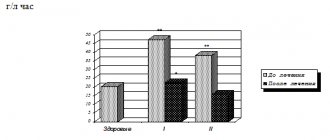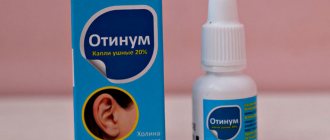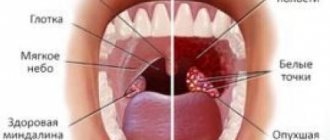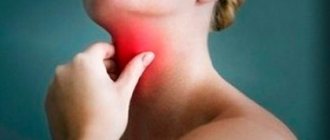Rating of drops from ear plugs
When compiling a list of the best drugs, we consulted with leading otolaryngologists and audiologists. Their medical experience and practice determined the main characteristics by which the nominees were selected:
- Composition of the product;
- Principle of operation;
- Purpose;
- Age indications;
- Rules of application;
- Efficiency;
- Price, manufacturer company.
In total, VyborExpert considered more than 5 dozen new generation drugs, time-tested products. The result of a comprehensive analysis and study was a top list of 6 names of ear drops for earwax. Review monitoring showed the strengths and weaknesses of each nominee.
How to choose drops for ear plugs
To dissolve an ear plug, drops must be selected in accordance with several characteristics - the purpose of the liquid solution, age indications from the manufacturer, as well as effectiveness and reviews. Let's take a closer look at each point.
Purpose
When choosing any medicine, it is important to consider the purpose. In the instructions, this item is prescribed with indications for use depending on the causes of congestion. Conventionally, the nominees can be divided into several groups - capable of dissolving, cleaning, removing sulfur, anti-inflammatory, analgesic, antiseptic compounds.
Age
Before you buy a medication, make sure that it is suitable for your age. Most of the presented nominees are effective for congestion not only in adults, but also in children, but there are still solutions with strict contraindications.
Efficiency and reviews
You can verify the effectiveness of ear drops for removing wax plugs not only by the indicated pharmacological properties, but also by customer reviews. Their real experience in carrying out procedures will help you choose the best option.
The best nasal drops
Diagnostics
An otolaryngologist can diagnose a wax plug; for this he needs, at a minimum, a regular ear specula and a forehead reflector for otoscopy. In some cases, a special microscope is required to perform an otomicroscopy and examine the eardrum in detail. Finding out whether the eardrum is intact is very important. For example, if due to chronic otitis media there is perforation, then some methods of treating and removing the ear plug will become inapplicable.
If there is a plug, the ENT doctor must pay attention to its size, location, and when trying to touch it with a microspatula or loop, it is very important to evaluate its consistency in order to understand how it can be most easily removed.
Corks can be either soft or dry:
- soft cork can have a rather viscous consistency (pasty, plasticine), similar to dense honey, and have a color dominated by yellow shades: light yellow, dark yellow, or honey yellow. Such plugs are flexible, and usually there are no problems with them. Also, a soft cork may resemble plasticine rather than paste, but still be viscous and pliable;
- Finally, the doctor will have the most work in the presence of dry plugs. They are always dark brown or completely black, unyielding, and their consistency is hard and dense.
Which drops for ear plugs are better?
We have offered you several current ideas and names on how to get rid of wax in the ear. Vyborexperta.ru does not give clear recommendations; it is better to consult a doctor. But he notes several top leaders:
- Otipax is an effective drug for otitis media, relieving inflammation and preventing the development of infection;
- Remo-vax is a multi-component dietary supplement for universal use, approved for children, pregnant women and breastfeeding women;
- Aqua-Maris Oto is a preventive product for children and adults for periodic rinsing of the ear canal, a hypoallergenic safe composition;
- Hydrogen peroxide is an affordable antiseptic solution for dissolving wax, removing it, and also effectively cleaning the ears.
If you suffer from a feeling of congestion in your ear canals, use solvent based solutions to remove the congestion. If you experience discomfort, pain, or hearing loss, it is important to consult a doctor in order to promptly identify problems.
Composition and functions of earwax
The main components of earwax are fats, cholesterol, unsaturated fatty acids and wax esters. Therefore, it does not dissolve in water, providing natural lubrication to the skin of the external auditory canal, as well as preventing it from drying out and protecting it from dust particles.
In addition, earwax contains sulfonamides (suppress the growth of pathogens), lysozyme (an enzyme that destroys the cell walls of bacteria) and immunoglobulins (cells of the immune system). Thanks to these components and the acidic reaction (pH = 4-6), earwax protects the external auditory canal from bacteria and fungi.
That is, the formation of earwax is a physiological process that is necessary for the protection and normal functioning of the hearing organ.
What is the self-cleaning mechanism of earwax?
The external auditory canal contacts the inside of the temporomandibular joint. And thanks to his movements during talking or chewing, earwax moves outward from the eardrum.
In addition, the skin of the external auditory canal grows at a rate equal to the growth of nails. As it grows, it moves outward from the eardrum, pushing earwax toward the exit. That is, for example, wax attached to the eardrum will move outward on its own within 3-4 months.
Also in the skin of the external auditory canal there are cilia, which, making oscillatory movements, promote earwax from the inside out.
However, unfortunately, often when exposed to certain factors, the work of the sulfur and sebaceous glands, as well as the self-cleaning mechanism, is disrupted.
Causes of wax plug formation Improper hygienic care of the external auditory canal Excessively frequent and rough use of cotton swabs or cleaning the external auditory canal with improvised means (for example, pins or knitting needles) is the most common cause of wax plug formation.
As a result, the skin of the external auditory canal is injured, and the production of secretion by the sulfur glands is enhanced. Next, the earwax is pushed deeper into the eardrum, where it becomes compacted. Therefore, the process of its self-cleaning is disrupted.
In addition, during intensive cleaning, the cilia of the skin of the external auditory canal are damaged. Therefore, they cease to perform their function: moving the formed sulfur outward. It is noteworthy that often methods of improper hygienic care of the external auditory canal come from childhood. Because children, watching adults, adopt their methods of removing earwax. Anatomical features There is tortuosity or narrowness of the external auditory canal, therefore the process of self-cleaning of earwax is disrupted. Moreover, the anatomical features of the structure can be either congenital or acquired (for example, appear after an injury).
Tendency to increased secretion of earwax Occurs when there are disturbances in the metabolism of fats in the body, which lead to increased formation of cholesterol, which is part of earwax. As a result, it becomes more viscous, and therefore the process of self-cleaning from the external auditory canal is disrupted. Inflammatory and infectious diseases of the external auditory canal (for example, otitis ) Lead to increased secretion production by the sebaceous and sulfur glands, but it does not have time to be removed, so it accumulates. In addition, the lumen of the external auditory canal decreases due to inflammatory swelling of the skin. As a result, a mechanical obstacle is created in the path of self-cleaning of earwax. The qualitative composition of earwax also changes: the number of protective factors in it decreases (lysozyme, immunoglobulins and others). Therefore, the ear glands are secondarily affected by pathogens, and the course of the infectious-inflammatory disease is aggravated. Using hearing aids or regularly using headphones leads to injury to the skin of the external auditory canal (for example, abrasions), so the production of earwax increases. Subsequently, it is pushed inside the external auditory canal and compacted. In addition, conditions are created for the addition of a secondary infection and the development of inflammatory diseases in the outer ear. Excessive hair growth inside the external auditory canal leads to disruption of the process of self-cleaning of earwax. This cause most often occurs in elderly patients. Working in a dusty environment (for example, in a mill or in mines) Dust settles in the external auditory canal. As a result, the secretion production of the ear glands increases, and the functioning of the skin's cilia is disrupted. A foreign body in the lumen of the external auditory canal leads to increased secretion production by the ear glands (a natural protective reaction of the body), which does not have time to be removed. In addition, a mechanical obstacle is created in the way of self-purification of sulfur. Prolonged stay in a room with dry air (humidity up to 40%) leads to the drying out of the secretion of the external auditory canal, so a sulfur plug of solid consistency is formed. The older a person is, the higher his risk of developing wax plugs. Because with age, the self-cleaning mechanisms of earwax weaken, and its production by the glands increases. In addition, in older patients, the number of hairs in the external auditory canal tends to increase. Therefore, an additional obstacle is created in the way of self-purification of sulfur.
Symptoms of wax plug
As a rule, sulfur plugs do not manifest themselves for a long time. Only when the lumen of the external auditory canal is almost completely blocked (70% or more) do signs of cerumen plug appear. Moreover, they can occur on either one or both sides, if wax plugs have formed in both ears. Ear congestion and , hearing loss Symptoms develop slowly due to the gradual accumulation of wax in the external auditory canal. Therefore, the patient usually does not pay any attention to the fact that he gradually becomes deaf and noise appears in the ears. Dry and irritating cough , nausea and dizziness, moderate pain and the echo of your own voice in the ear. Signs appear if the wax plug presses on the eardrum, irritating its nerve endings. With prolonged pressure from wax plugs, inflammation of the eardrum (myringitis) or the middle ear cavity (otitis media) sometimes develops. As a result, mild pain in the ear appears (with otitis media it intensifies during chewing or talking), body temperature may rise moderately, and small discharge (most often purulent) appears from the external auditory canal. On a note! Most often, the first signs of wax impaction appear upon contact with water (for example, after diving in a pool or taking a shower). Because it swells and partially pushes inward closer to the eardrum, blocking the lumen of the external auditory canal.
How to remove wax plug
There are several ways: using pharmaceutical drugs at home, as well as using hardware methods in a medical institution.
How to remove wax plug at home
Trying to remove large wax plugs at home yourself and in the presence of severe symptoms is useless, and not always harmless. Since you can accidentally get an infection, damage the eardrum or the skin of the external auditory canal. However, small wax plugs can be removed at home, using caution. Moreover, it is necessary to use pharmaceutical products (ear drops), and not hygienic cotton swabs.
Why can't you use cotton ear swabs?
Because with their help, earwax is compacted and pushed closer to the eardrum. That is, the sulfur plug, on the contrary, increases in size. In addition, such deep cleaning may cause injury to the skin of the external auditory canal and/or eardrum (perforation - loss of integrity). Drops for removing wax plugs - pharmaceutical products
They are used for the safe and painless removal of wax plugs at home, as well as to prevent its formation. In addition, ear drops are used as a preparatory step before an ENT doctor removes wax plugs. The most commonly used agents for cerumenolysis
| A drug | Release form | Mode of application |
| A-Cerumen | In 2 ml dropper bottles | To remove wax plug , 1 ml of solution (half of a dropper bottle) is instilled into the external auditory canal, and after one minute it is cleaned. The procedure is carried out twice a day for 3-4 days. To prevent the formation of wax plugs (for example, in patients using hearing aids), a solution of 1 ml is instilled into each ear canal twice a month. |
| Remo-Wax | In 10 ml bottles with a plastic dispenser | To remove wax plug, 10 to 20 drops of solution are instilled into the external auditory canal of the diseased ear, and after 20-60 minutes it is removed. The procedure is carried out daily for 3-4 days. To prevent the formation of sulfur plugs, the drug is used once every two weeks. |
When should you not use ear drops?
- In case of a defect (violation of integrity) of the eardrum.
- If the patient has chronic otitis or in the past he suffered purulent otitis.
- A-Cerumen is contraindicated for use in children under 2.5 years of age.
Can peroxide be used to remove earwax?
Yes, you can use 3% hydrogen peroxide. Whereas the use of a higher percentage of the solution is contraindicated, since it causes a chemical burn to the skin of the external auditory canal and eardrum. The mechanism of action of hydrogen peroxide When in contact with tissues, peroxide breaks down into molecular oxygen and water. In this case, oxygen oxidizes the tissue (in this case, the cerumen plug), forming foam, which mechanically cleanses the external auditory canal. Moreover, it should be remembered that hydrogen peroxide leads to swelling of the cerumen plug, so ear congestion and hearing loss intensify. However, after cleaning the external auditory canal, the symptoms disappear.
When should you not use hydrogen peroxide?
- If there is a defect in the eardrum.
- If the patient has suffered from purulent otitis media in the past or is currently suffering from chronic otitis media. Hydrogen peroxide should be used with caution as it can burn the skin of the external auditory canal and/or eardrum. Therefore, if during the procedure there is a severe burning sensation and pain in the ear, stop it and be sure to consult an ENT doctor.
Do I need to rinse my ear to remove wax?
Washing out (irrigation) is the most common and effective way to remove wax plugs by an otolaryngologist. However, it is not recommended to remove wax plugs by rinsing yourself at home. Since there is a high probability of damage to the eardrum and/or skin of the external auditory canal.
How to rinse wax plug?
If the sulfur plug is soft, then washing is carried out without preliminary preparation. When the sulfur plug is dry, it is necessary to soften it first. For this purpose, half a pipette of 3% hydrogen peroxide is instilled into the external auditory canal of the diseased ear 5-6 times a day for 2-3 days. Or use cerumenolysis products according to the instructions. To rinse the external auditory canal, use water or any solution of external antiseptic (for example, furatsilin), which are heated to 37°C. There are instrumental (manual) and hardware methods for washing out wax plug:
- Using a Janet syringe, the capacity of which is 100-200 ml. During the procedure, the doctor delivers a high-pressure stream of water into the external auditory canal towards the eardrum. Due to this, particles of sulfur plug move away from the place of attachment. The water then flows into the tray through the outlet of the external auditory canal. However, Janet's syringe is capable of creating pressure up to 10 atmospheres. Whereas the eardrum can only withstand 2 atmospheres. Therefore, the success of the procedure largely depends on the professionalism of the doctor.
- An electronic irrigator is used (Propluse 4th generation) - a new technique that has found wide application. The effectiveness of the procedure is based on the pulsed nature of the jet supply, as well as the ability to regulate its pressure. This ensures complete, painless and safe removal of the wax plug.
When should you not rinse your ear to remove wax?
- Violation of the integrity of the eardrum (perforation) is the result of injury or infection.
- The presence of acute or chronic otitis media.
- Previous history of purulent otitis media.
Because in these cases, water entering the middle ear cavity can lead to an exacerbation of the chronic inflammatory process.
Prevention of wax plugs
It is important for everyone, but especially for people with an increased risk of wax accumulation in the external auditory canal. What do we have to do?
- Clean the pinna and the opening of the external auditory canal with a swab soaked in water, without penetrating the external auditory canal.
- To improve the natural removal of wax, take your earlobe in your hands and pull it down several times. It is recommended to carry out such “charging” daily in the morning.
- If necessary, use ear cotton swabs with a limiter, but do not be too overzealous. Because they clean the external auditory canal from earwax quite well, preventing deep penetration into it.
- If you have an increased risk of developing wax plugs (for example, using hearing aids or working in a dusty room), use cerumenolysis products (for example, Remo-Vax) for prevention.
- Maintain indoor air humidity at least 40% using humidifiers.
- Use earplugs when working in dusty areas.
- When swimming in a pool or open water, protect the external auditory canal from water: put a cap on your head or use protective equipment. There are special earplugs for swimming: wax-impregnated tampons, plugs that protect against water or with a water-repellent effect.
- If the anatomical structure of the external auditory canal is prone to the formation of cerumen, periodically visit an otolaryngologist and follow all his recommendations.
What should you avoid?
- You should not use hygienic cotton swabs that penetrate deep into the external auditory canal. Since the sulfur is pushed closer to the eardrum and compacted. In addition, there is a risk of injury to the eardrum if you are accidentally distracted by another event during the procedure. Young children especially suffer from this, because during cleaning they fidget or break out of their mother’s hands.
- Do not use matches, knitting needles, pins or other sharp objects to remove wax. Since there is a high risk of injury to the eardrum and skin of the external auditory canal.
- Avoid sudden changes in ambient temperature. For example, in the heat - moving from the street to a room where the air conditioner is running.
- Do not use earwax candles to remove wax plugs on your own and without consulting an ENT doctor, as you may harm yourself. For example, cause a burn to the eardrum or the skin of the external auditory canal, and if there is inflammation in the outer ear, aggravate the course of the disease.
Otorhinolaryngologist L.V. Ledova.







